Educational Worrksheet Comparing Two Pictures for Their Differences
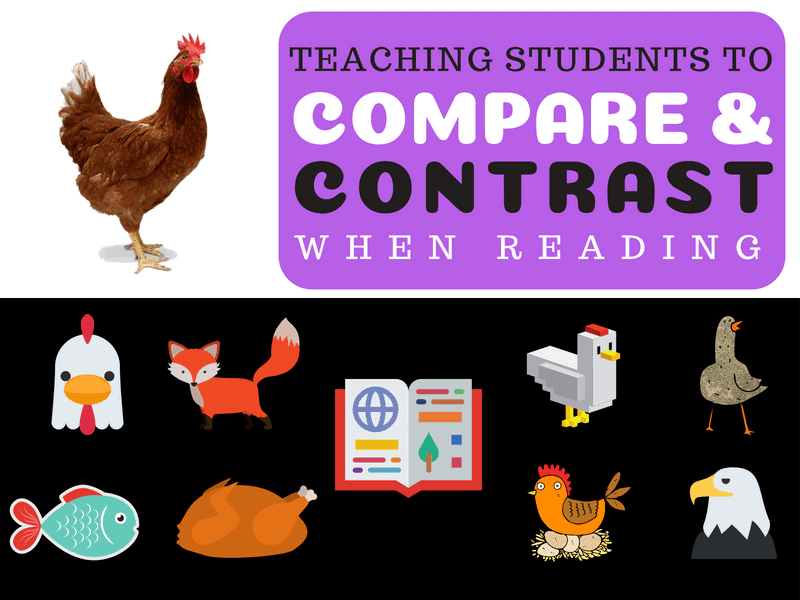
Comparative Thinking Skills: Teaching Students to Compare and Contrast
The ability to compare and contrast is one of the first higher-order reading comprehension skills students are introduced to. And it is no wonder, as the ability to categorise and compare things in terms of their differences and similarities corresponds to some of the earliest stages of cognitive development. Without the ability to group things effectively in terms of their similarities and differences, much of what we consider as 'learning' would be impossible.
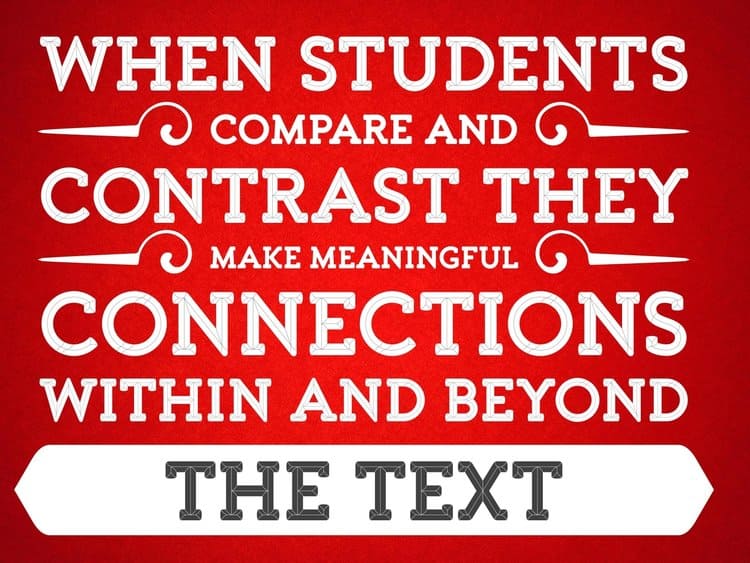
Defining the Terms Compare and Contrast
The ability to compare and contrast has its uses far beyond the classroom. With practical applications in everything from choosing which insurance policy to buy, to what clothes to pack for a holiday, comparing and contrasting are requirements for much of our everyday decision-making. However, when we discuss these terms in relation to reading skills, they have much more specific meanings.
Compare, in relation to reading, refers to the process of identifying the similarities and differences between two things. On the other hand, Contrast refers to identifying only the differences between two things. While the distinction between these two terms may appear on the surface to be quite subtle, it is important that students can accurately differentiate between the two concepts to ensure they are able to answer questions and prompts accurately.
A COMPLETE COMPARE AND CONTRAST UNIT FOR STUDENTS
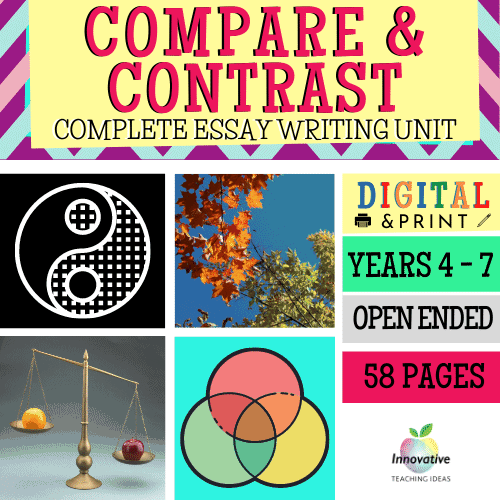
Teach your students to write excellent compare and contrast essays using a proven model of research skills, writing strategies and engaging content. ALL CONTENT, RESOURCES AND ASSESSMENT TOOLS INCLUDED.
A COMPLETE 58 PAGE UNIT of work: No preparation required including
- ❤️ Lesson plans
- ❤️ Teaching materials
- ❤️ Visual writing prompts
- ❤️ Assessment rubrics
- ❤️ Writing Checklists
- ❤️ Graphic Organizers
- ❤️ Research Tools
- ❤️ Plus much more
Importance of Teaching Comparative Thinking
Compare and contrast type questions are commonly featured in standardized tests, but there are many more reasons for students to develop their comparative thinking skills than just passing tests. A few of the most compelling reasons include:
● These types of questions serve as good introductions for students to begin developing higher-order thinking skills
● Answering compare and contrast questions help students focus closely on the details in a text while improving their comprehension in the process
● The attention to detail required in reading to compare and contrast helps students to better retain the information they are reading
● Knowledge gained through comparing and contrasting helps students understand how to organize information, think more clearly, and express ideas more effectively in their own writing.
GRAPHIC ORGANIZERS FOR COMPARING AND CONTRASTING
Most students find it easy to follow graphic organizers such as the ones below to help compare and contrast information. They are a huge time saver and can be found and created in both digital and paper-based format quickly and easily.
Helping Students to Approach Compare and Contrast Questions
Though we have established that comparing and contrasting serves as a good introduction to the higher-order reading skills, students can often find these types of questions challenging. The best thing we can do to help our students effectively answer these types of questions is to offer them a coherent strategy with which to approach them. One effective approach can be broken down into the following steps:
Step 1: Analyze the Question
As mentioned in the introduction to this article, it is very important students clearly understand what exactly the question is asking them to do. To achieve this effectively students must break the question down into its simplified parts.
If, for example, the question asks a student to contrast the opinions of two critics on the use of metaphor in a poem, students need only focus on the parts of the text where the critics deal with metaphor and, furthermore, students need only focus on where these two opinions differ. On the other hand, if the question asks students to compare the views of the two critics, they must focus on both similarities and differences in their answers.
Step 2: Identify Similarities and Differences in the Content
Once students have identified the purpose of the writing prompt or the nature of the question, they can start to read the text and take note of the similarities and differences in terms of content. Students can begin the process by highlighting or underlining the appropriate information in the text. They can then record this information in note form or bullet points. These are often sufficient for students to prepare for writing their answers. However, it is often helpful for students to use graphic organisers to visually display the information they extract. Venn diagrams are particularly suitable for displaying comparisons as they can usefully display areas of difference, as well as any overlapping similarities. Venn diagrams can easily accommodate a comparison of multiple ideas through the addition of more circles in the diagram.
Step 3: Identify Similarities and Differences in the Structure
Once students have examined and identified the similarities and differences in terms of content, they can begin to look at how the texts compare and contrast in regards to structure. This will require students to give consideration to the genre of each text. Often, students are asked to compare texts that are in the same genre. Sometimes, however, they will be asked about texts which share a common a theme, but are presented in different genres. Depending on the exact nature of the question, students may look at a variety of elements of structure, including how the text is presented in terms of:
● The length of sentences and paragraphs
● The progression of ideas and arguments
● The point of view expressed (Informative? Emotional?)
● The use of stylistic elements, such as irony, humor, emotional appeals etc
● The setting, characters, and plot in fiction
● The use of facts and statistics in nonfiction.
Step 4: Identify Similarities and Differences in Media
Advances in technology make it ever more important that students develop their literacy skills in media beyond the printed word. When we think of students reading a text, we must ensure we recognize that texts can be visual and audio in nature too. As part of learning to compare and contrast texts, students should be offered opportunities to compare texts in a variety of media. Many of the texts students will encounter, whether in print or online, will contain information presented in a variety of ways, including diagrams, charts, photographs, and illustrations – to name a few. Online texts especially may contain embedded videos and audio tracks. These elements should not be ignored as they are an intrinsic part of how the text operates and, therefore, students should be prepared to compare and contrast these too.
Step 5: Evaluate
Now that the students have analyzed closely the question or writing prompt, identified the similarities and differences in content, structure, and media used across the texts, it is time for them to evaluate the texts and offer their opinion on their overall merit or effectiveness. The following questions are suggestions of areas to focus on to evaluate the texts:
● Which of the texts is the most convincing?
● Which of the texts best employs appropriate media?
● Which of the texts is the most enjoyable?
In the evaluation, students can choose to focus on the most interesting, relevant, and informative material they have identified to illustrate the wider thesis of their opinion. READ OUR COMPLETE GUIDE TO STORY ELEMENTS HERE
3 Quick Compare and Contrast Reading Activities:
Activity i. Chalk and Cheese

This is a great activity for students to cut their teeth on reading to compare and contrast. Read the students a modern updated version of a traditional tale such as Cinderella or Little Red Riding Hood. It doesn't have to be a fairytale necessarily, but it should be based on a standard tale that the students are very familiar with. Students work on comparing the similarities and differences between the two versions of the tale. Through skilful questioning on your part, draw from the students' answers that reflect on not only the content of each tale, but the structure and the media employed too. This activity offers further opportunities for students to focus on aspects of story elements and sequencing too.
Activity ii. The Zen of Venn
This activity works well when comparing and contrasting two longer texts. Divide the class into smaller groups and assign each of them one of the chapters, sections, or extracts etc that are being compared and contrasted. Groups scan their text and note the features they identify according to the steps outlined in the Helping Students to Approach Compare and Contrast Questions section above. Groups can then combine their findings in a Venn diagram displaying the similarities and differences between each text.
Activity iii. Visual Contrasts
Increasingly, we are recognizing the need for students to approach visual texts with the same rigour we have traditionally approached the printed word. In this primarily oral activity, students are given two or more photographs or pictures to compare and contrast. You may wish to select two pictures related to the same historical event, for example. Students reflect on the pictures and critically evaluate them through discussion. Students work together to identify the similarities and differences in the pictures and they then record their findings. This information can then serve as useful material to prompt a whole class discussion on students' personal views on each of the pictures.
In the End
In this article, we have taken a look at some of the reasons why it is so important for our students to develop these reading skills and some of the ways we can go about helping them do this. Our students will benefit greatly from developing a methodical approach in this area. Categorizing things in terms of their similarities and differences is something we do instinctively as humans, but it is essential this is further refined through conscious practice. Remember too, opportunities to reinforce student understanding of the processes of comparing and contrasting will arise regularly in all types of lessons, whether in the subject of English or in other areas such as Science, Maths, History and beyond. Comparing and contrasting helps us all understand the world around us and our place in it.
A COMPLETE DIGITAL READING UNIT FOR STUDENTS
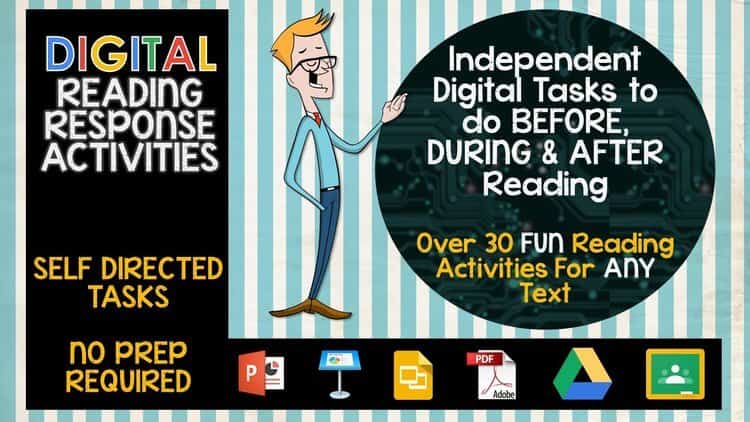
Over 30 engaging activities for students to complete BEFORE, DURING and AFTER reading ANY BOOK
- Compatible with all devices and digital platforms including GOOGLE CLASSROOM.
- Fun, Engaging, Open-Ended INDEPENDENT tasks.

Teaching Resources
Use the resources and tools below with your students to improve their writing skills through proven teaching strategies.
USEFUL VIDEOS FOR TEACHING STUDENTS TO COMPARE AND CONTRAST
OTHER GREAT ARTICLES RELATED TO COMPARE AND CONTRAST
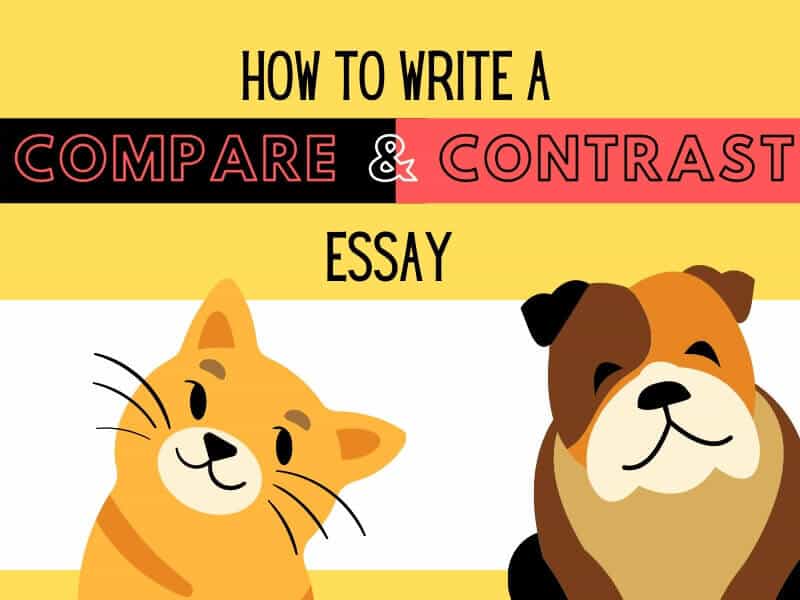
How to Write a Compare and Contrast Essay
WHAT IS A COMPARE AND CONTRAST ESSAY? Essentially, compare and contrast essays ask students to evaluate the similarities and differences between two things. Usually, there will be some meaningful connection between the two things that are to be compared and contrasted. These types of essays are not merely about stating the obvious, instead they challenge…

Sequencing events in reading and writing
WHAT IS SEQUENCING? A DEFINITION. Sequencing is an essential reading skill that students must develop if they are to fully understand all reading material. Luckily, sequencing comes naturally to most children as the concept of chronological order is reinforced from very early on through the practice of the routines of daily life. From the very…
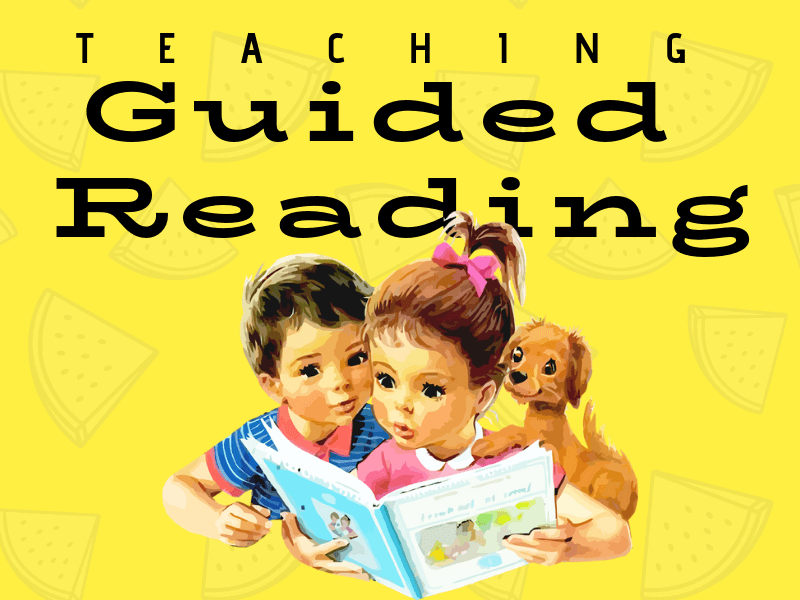
How to teach Guided Reading: Teaching Strategies and Activities
Guided Reading in THE Classroom: Strategies for Success Few skills can benefit a child more throughout their life than the ability to read. It is a skill of such singular importance that it plays a role in most aspects of everyday classroom learning. However, unfortunately for a skill of such importance, it isn't always possible…
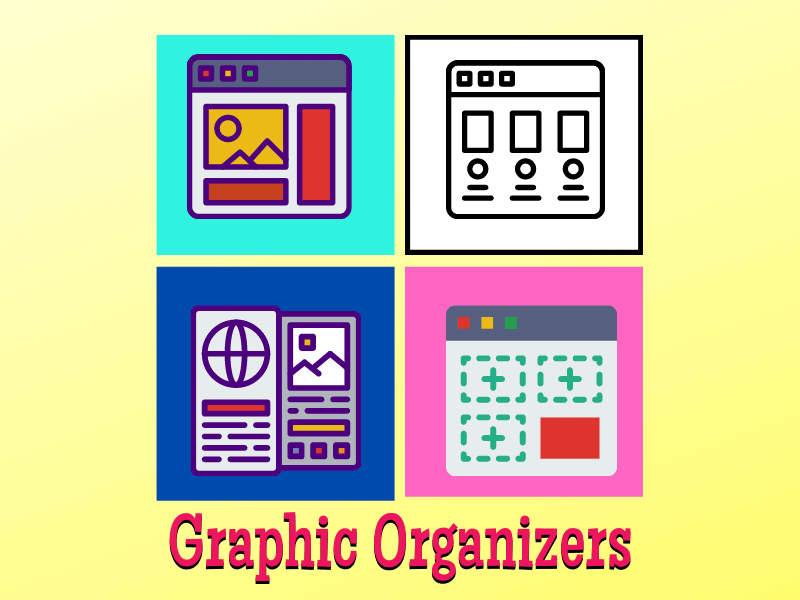
Graphic Organizers for Writing and Reading
Huge collection of digital graphic organizers for writing and reading: Digital and Printable graphic organizers and templates for teachers and students. Reading and writing templates and teacher organizers.
READING ACTIVITIES FOR ANY TEXT

This massive collection of ☀️READING ACTIVITIES☀️ covers all essential reading skills for elementary/primary students. NO PREP REQUIRED! works with all text and media types. Thousands of teachers have adopted this as a GO TO RESOURCE for independent and group tasks.
- 60+ activities requiring students toWRITEin a range of genres and styles based on their text
- 40+ activities incorporating ARTISTIC and CREATIVE skills about their book.
- 30+ TECHNOLOGY based activities, including 20 open-ended iPad and web-based tasks
- 25+ GROUP based tasks
- 20+ tasks requiring RESEARCH, ENQUIRY and EXPLORATION of concepts within a text.
- 50+ tasks you can use with FILMS, GRAPHIC NOVELS and DIGITAL LITERACIES.
- 15+ activities involving DRAMA, MUSIC and ROLE PLAYING
- 15+ GRAPHIC ORGANIZERS that can be applied to any text
Content for this page has been written by Shane Mac Donnchaidh. A former principal of an international school and university English lecturer with 15 years of teaching and administration experience. Shane's latest Book the Complete Guide to Nonfiction Writing can be found here. Editing and support for this article have been provided by the literacyideas team.
Educational Worrksheet Comparing Two Pictures for Their Differences
Source: https://literacyideas.com/compare-and-contrast/